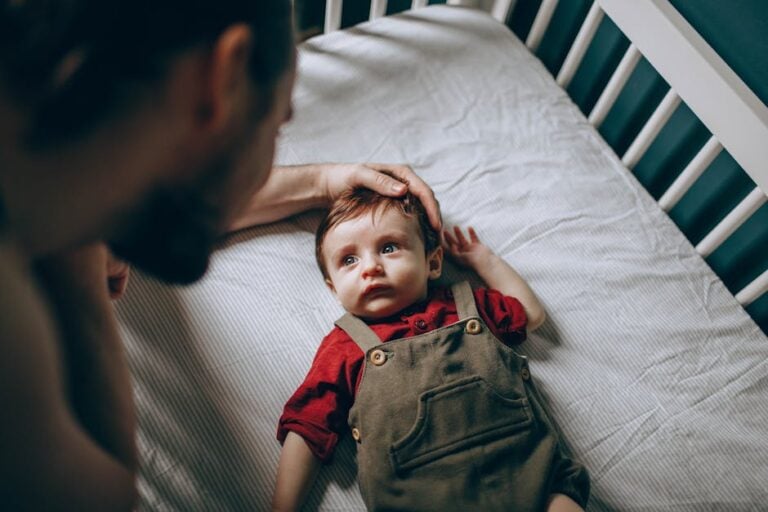Co-Sleeping and SIDS: Key Statistics and Insights
Co-sleeping, a practice where parents share a sleep surface with their infants, has become a topic of heated discussion among parents, healthcare providers, and sleep experts. The association between co-sleeping and Sudden Infant Death Syndrome (SIDS), alongside other sleep-related infant deaths, emphasizes the necessity of understanding safe sleep practices. This article delves into critical statistics and insights surrounding co-sleeping and SIDS to guide parents in making informed decisions about their babies’ sleep environments.
Understanding Co-Sleeping and SIDS
What is Co-Sleeping?
Co-sleeping involves infants sleeping close to one or both parents, which can occur through bed-sharing (sharing the same bed) or room-sharing (sleeping in the same room but on separate surfaces). While room-sharing is generally regarded as a safer option, bed-sharing presents significant risks that parents should be aware of.
Defining SIDS
Sudden Infant Death Syndrome (SIDS) refers to the unexplained death of a seemingly healthy infant during sleep, typically affecting babies under one year old. It is categorized under Sudden Unexpected Infant Death (SUID), which also covers deaths attributed to unknown causes and accidental suffocation.
Historical Context of SIDS and Co-Sleeping
Historically, co-sleeping has been a cultural norm across the globe, particularly in Eastern societies. However, the late 20th century saw a spike in SIDS cases in Western countries, prompting health campaigns focused on safer sleep practices. The Back to Sleep initiative, now called Safe to Sleep®, launched in the 1990s, effectively encouraged parents to position infants on their backs during sleep, substantially reducing SIDS rates.
Cultural Variability in Co-Sleeping Practices
Cultural attitudes toward co-sleeping vary widely. In Japan, for instance, co-sleeping is accepted and coincides with lower SIDS rates. In contrast, countries like the United States and the United Kingdom promote strong anti-bed-sharing messages due to associated risks.
Jenny Ward, Chief Executive of The Lullaby Trust, emphasizes the need for informed discussions about co-sleeping. She advocates for providing practical advice rather than merely discouraging the practice, ensuring families have access to vital safety information.
Key Statistics on Co-Sleeping and Infant Deaths
Each year, roughly 3,400 unexpected infant deaths (SUID) are reported in the United States, involving infants under one year old. This category includes:
– SIDS: 1,389 deaths (41% of SUID)
– Unknown Causes: 1,062 deaths (32%)
– Accidental Suffocation and Strangulation in Bed (ASSB): 905 deaths (27%)
These alarming figures, sourced from the CDC/NCHS National Vital Statistics System, highlight the devastating impact of sleep-related deaths.
Trends Over Time
Since the implementation of safer sleep initiatives, SUID rates have notably decreased. However, progress has slowed in recent years. The SUID rate as of 2020 stands at 92.9 deaths per 100,000 live births.
From 1990 to 2020, SIDS rates dropped impressively—from 130.3 to 38.4 deaths per 100,000 live births—reflecting increased awareness and adherence to recommended practices. Conversely, ASSB rates have remained stable yet troubling, rising to 25.0 deaths per 100,000 live births in 2020.
Unpacking Risk Factors Associated with Co-Sleeping
Co-sleeping, while comforting for many families, can entail significant risks, especially when combined with certain factors.
Major Risk Factors
– Soft Bedding: Infants sleeping on soft bedding, such as comforters and pillows, face a suffocation hazard. The safest sleeping arrangement involves a firm, flat mattress.
– Parental Smoking: Babies exposed to cigarette smoke—both in utero and after birth—are at increased risk. In many tragic co-sleeping incidents, smoking was linked to higher fatality rates.
– Alcohol Consumption: Impairment from alcohol affects responsiveness, leading to scenarios where parents unintentionally roll onto their infants.
– Drug Use: Similar to alcohol, drug use can impair a caregiver’s ability to ensure the infant’s safety during sleep.
– Premature and Low Birth Weight Infants: Babies born prematurely or with low birth weight have underdeveloped respiratory systems, rendering them more susceptible to suffocation risks.
Safe Co-Sleeping Practices
If co-sleeping is a choice, adopting essential safety measures can mitigate risks significantly. Here are recommendations to create a safer environment:
– Keep Pillows and Adult Bedding Away: Ensure that pillows and other bedding do not pose suffocation risks to the baby.
– Sleep Baby on Their Back: Always position your infant on their back to sleep, significantly decreasing the likelihood of SIDS.
– Avoid Other Children and Pets: Limit the sleep space to the baby and parent(s) to prevent potential accidents.
– Choose Safe Sleep Surfaces: Avoid co-sleeping on sofas or armchairs, where the risk of falling and suffocation is drastically heightened.
Conclusion
Understanding the statistics and risks associated with co-sleeping and SIDS is imperative for every caregiver. By adhering to recommended guidelines and remaining informed about safe sleep practices, parents can create a secure environment for their infants. Open discussions about co-sleeping, alongside ongoing education, can significantly decrease the probability of sleep-related infant deaths. Ultimately, prioritizing safety in sleep arrangements ensures that both parents and children can enjoy peaceful nights and healthier futures.













